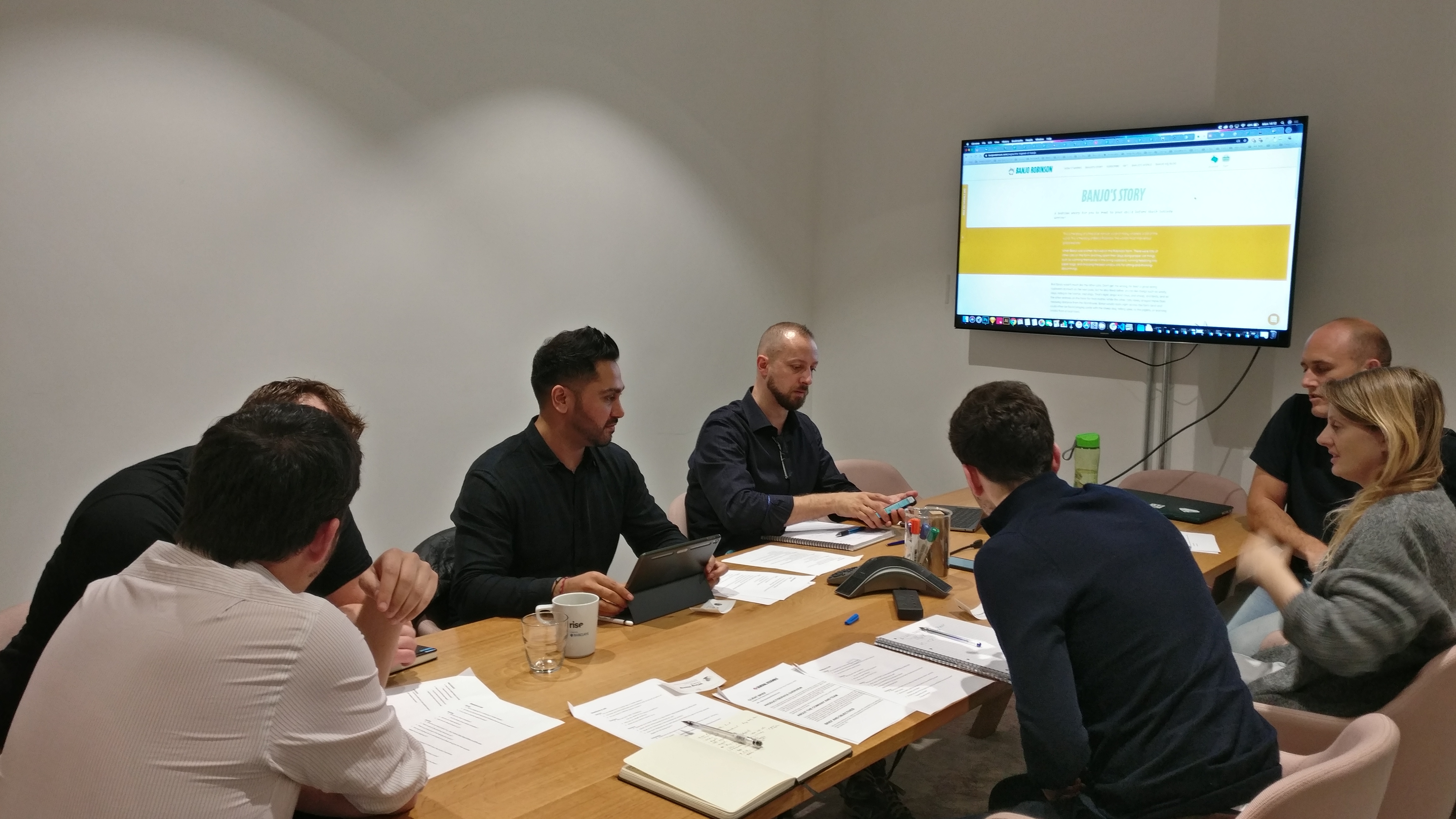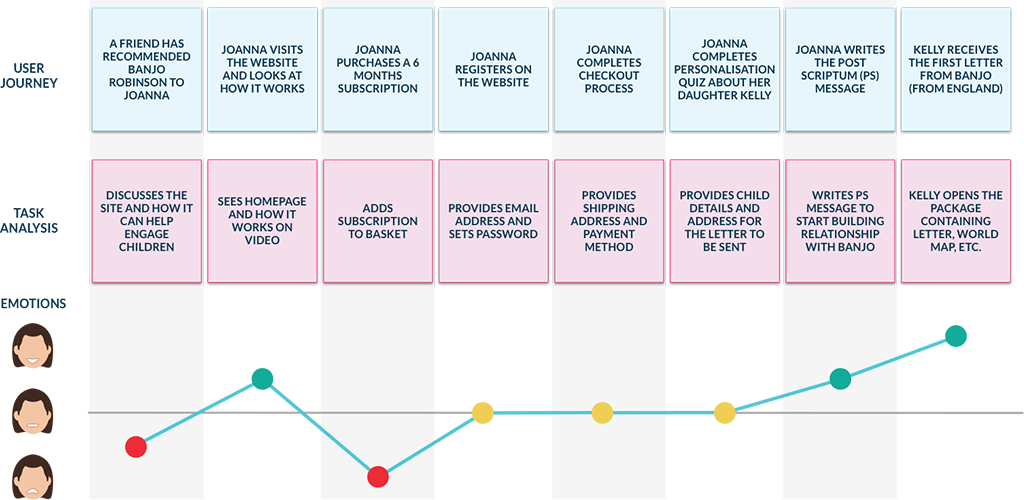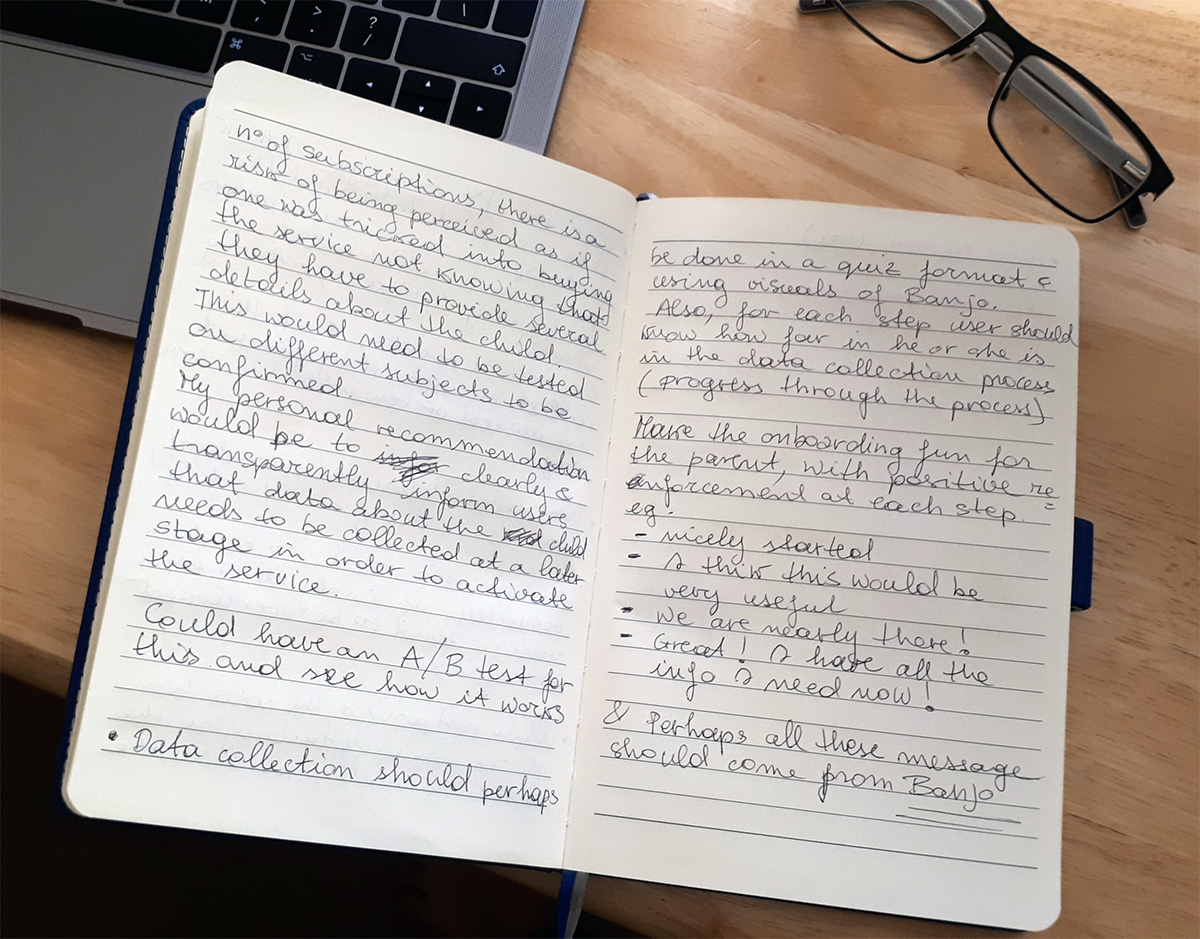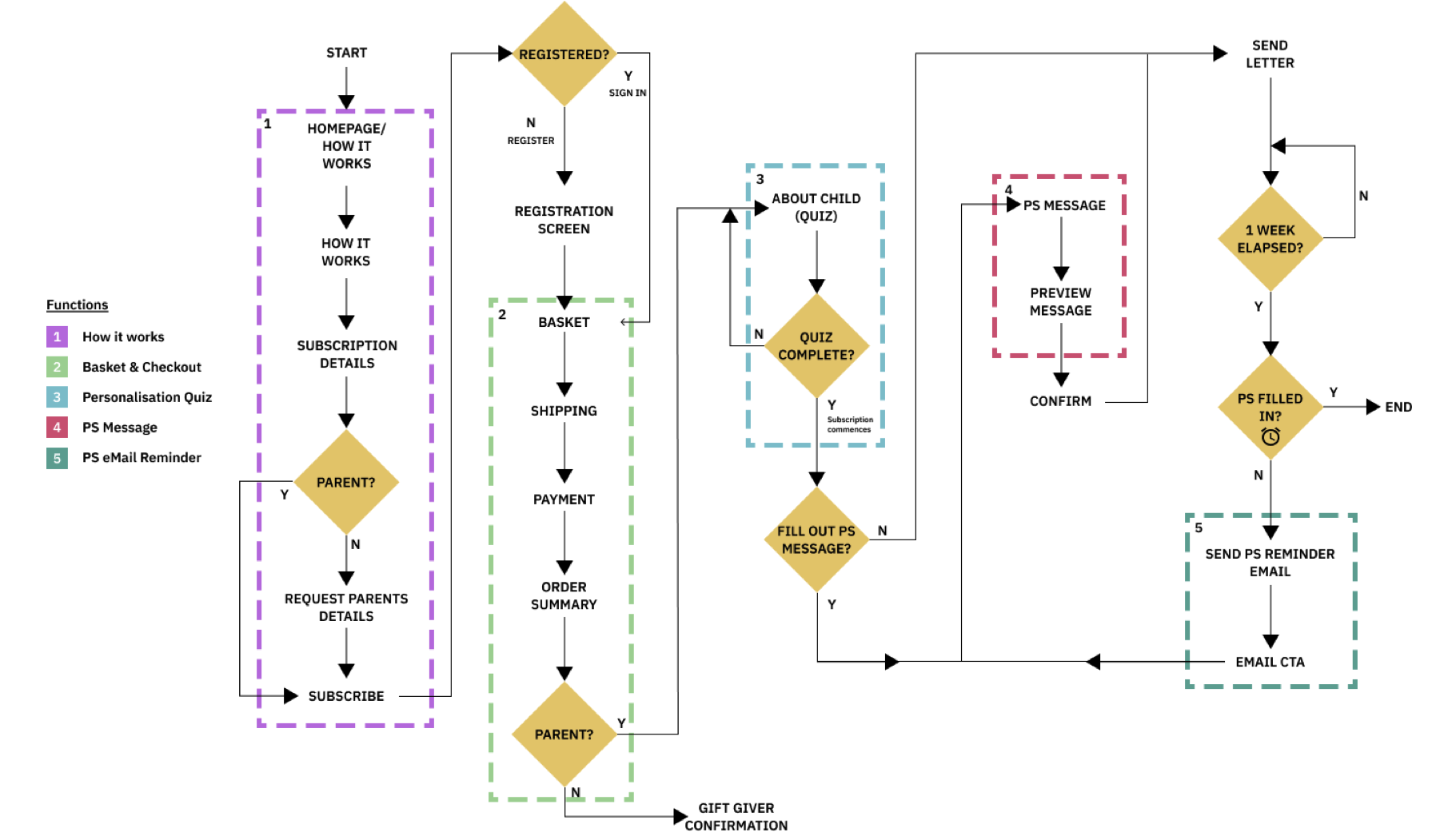Banjo Robinson
Mobile-first solution for children’s penpal
Reading Time: 7 minutes
Project intro
Client group-project as part of the UX Design Immersive course at General Assembly London. My team was tasked to improve Banjo Robinson’s website as a mobile-first solution, since most of the traffic through the site comes from mobile devices.
Type: Group Client Project
Duration: 2 weeks
My Role: User Research, Prototype Testing (Low | Mid | Hi-Fi) & UI/Hi-Fi Mockups
Platform: Mobile Web
UX Tools: Screener Survey | User Interviews | Competitive Analysis | Affinity Mapping | User Persona | Storyboarding | User Journey | User Flow | Design Studio | Wireframing | Usability Testing
Software Tools: Google Forms | Marvel | Adobe Photoshop | Figma | Google Slides
Background
Banjo Robinson is a child’s first pen-friend. His role is to get children embracing literacy from an early age, helping them to enjoy reading and writing… and he’s a cat!
The Challenge
The website needed UX improvements on 3 major areas:
- Better inform potential new users on how the product works
- Make collection of user details for the letter personalisation more engaging
- Enhance parent/guardian’s engagement so to make sure that they regularly fill in a Post Scriptum (or PS) message
The key requirement is to increase the current conversion rate and have a higher percent of parents submitting the PS message.
The Team & My Role
My team was formed of 4 members and we used Scrum to update each other on the progress and work to do.
While overlooking the whole project as a team member, in my role I did:
- user interviews
- user research synthesis
- prototype testing
- implementation of the final Hi-Fi wireframes and prototype
I also actively participated in the Design Studio workshop and supported my team in generating valuable ideas for implementing the solution.
Process & Planning
Kick-off meeting
Following a quick analysis of the current website and the brief, I went with my team to meet the client to gain further insight about the project.

Takeaways
- Better understanding of client’s infrastructure and its limitations
- Clarified their target audience
- Learned about their upgrade plans
- Confirmed mobile-first implementation
- Clarified expected on-boarding functionality
- Highlighted importance of the Post-Scriptum (PS) messages
To develop our solution, my team and I followed the double diamond process.

We started with the research, then we synthesised the information obtained through the research phase.
Once we had a clear and well-defined project, we proceeded with the ideation phase and eventually arrived at a working solution through the implementation of our ideas.
1. Discovery: Research
Current Usability
It was important for the team to see people’s reaction when using the current version of Banjo Robinson website, both on the phone and on laptop. Therefore a decision was made to conduct a usability testing session.
Competitive analysis
Banjo Robinson is a unique offering and does not have direct competitors, however we decided to investigate similar service offerings in non-direct competitors and we focused on 4 of them: Stitch Fix, Kiwi Co, Butternut Box, and Toucan Box.

Key findings
- The key strengths of the Banjo Robinson service is the rich personalisation and the fact that it is an educational product
- On the other hand, the current on-boarding process is rather long and tedious, and it is made of too many steps
Screener Survey
A screener survey was also posted on the General Assembly Slack Survey channel. With my team, I created the screener survey to collect information about the potential audience and to find volunteers to interview.
32 people responded to our survey, and here are the most relevant questions and their outcome:
- Would you consider a subscription-based present?
- Do you have children?
- Have you heard of Banjo Robinson — the PenPal subscription service for children?

User Interviews
9 people accepted to be interviewed. A list of registered users willing to be interviewed was also provided by Banjo Robinson’s Team.
- I prepared 2 sets of questions, respectively for registered and unregistered users
- I interviewed 4 users on the phone and in person, while my other teammates consulted 5 more users
2. Define: Research Synthesis
Affinity Mapping
The result was synthesised into an affinity map, where 9 insight groups emerged from the research.

We decided to concentrate our effort on 5 main areas:
- Process: 5 out of 9 interviewees said they did not understand the service offerings
- Data Collection: 7 out of 9 interviewees were uncomfortable to provide their child personal details
- Price: There are already many commitments related to the kids education
- School Involvement: Users would be happier if the service was to be endorsed by schools
- Suggestions: additional educational elements like numeracy was suggested
User Persona
Following on from our user research we decided to create a user persona, Joanna, to help us depict user’s goals and frustrations.

Joanna, 38, London, Manager
Bio: Joanna is a manager at her local retail bank in Wimbledon. She lives with her husband, Peter, and their two children, Tom, aged 8 and Kelly, aged 5.
Objectives
- Spend time with her kids
- Develop kids’ learning so that they can prepare for the next year at school
Frustrations
- Too much technology distracting kids
- Other educational commitments
- Not enough time for everything!
Experience Map
Joanna’s goals start to materialise when she meets her friend Bethany, who recommends Banjo Robinson as a possible way to achieve her objectives. Her journey to her goals are represented as follow:

3. Develop: Ideate
A couple of days before the design studio workshop I woke up in the middle of the night, as if the solution was tapping me on the shoulder.
It was 4am and rather than staring at the ceiling and rolling on the bed trying to get back to sleep, I grabbed my notebook and started to quickly jot down my ideas.
I noted down 3 pages of potential solutions, one of which can be summarised as… it would be Banjo asking for the child details!

The main idea was that, by having Banjo Robinson dealing with the detail requests, we could immediately create a strong emotional bond between the user/parent and Banjo the character.
Design Studio Workshop
The brainstorming session lasted two hours and saw a group of 10 attendees (4 of us from GA and 6 from team Banjo Robinson) actively participating in the workshop, going broad with a lot of ideas and potential solutions!

User Flow
The outcome was then synthesised in the happy path user flow, divided in 5 sections:

4. Delivery: Ideas Implementation
Rapid Prototyping
The proposed implementation started with sketching some paper wireframes and then turning them into a clickable prototype using Marvel.

The prototype was then tested with 9 users and the feedback received from each user iterated through the Mid-Fi prototype using Figma.

Solution
Achievements
Along with my teammates, I presented the work to the Banjo Robinson team, and their feedback was very positive.
Following the presentation we debriefed two members of the client team. That allowed us to go more into the details of how our proposed solutions work and what the next steps to further improve the design could be.
Next Steps
After speaking with the larger team, we aligned on three other improvement areas that we would move forward with, time/budget permitting:
- A point based system so that a reward is being granted after a certain amount of PS were posted
- An alternative quick child personalisation form
- A tracking page to report the delivery progress from the time the user sign in, post the PS and receives the physical letter
Learnings
I immediately realised that the short timeframe given would have been a big challenge. In fact, with my experience as a Scrum Master, I was well aware that a two-week sprint was rather a short time for implementing such a complex solution that touches large portions of the current client website.
My team and I formed a very cohesive and well rounded group. We worked on the different strengths that each individual could bring to the table.
I felt comfortable going out interviewing people and, by leading with empathy, I could easily pinpoint user’s frustrations and highlight their expectations.
It was exciting taking part in the Design Studio workshop, iterating with stakeholders, and seeing where their expectations were overlapping with those of their users. It was personally gratifying realising that, during the workshop, my ideas were positively acknowledged by the client.
As a team we managed to extract values from all research and design activities and put that value back into a solution that allowed us to achieve all the planned objectives.
Do you like what you’ve seen? Contact me on mg.uxdesign@gmail.com
